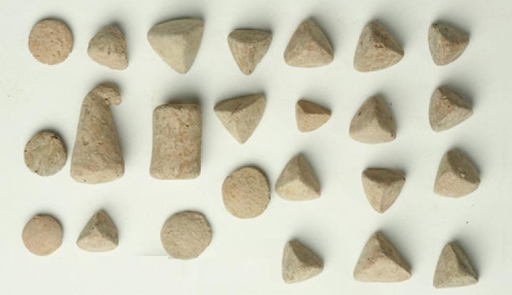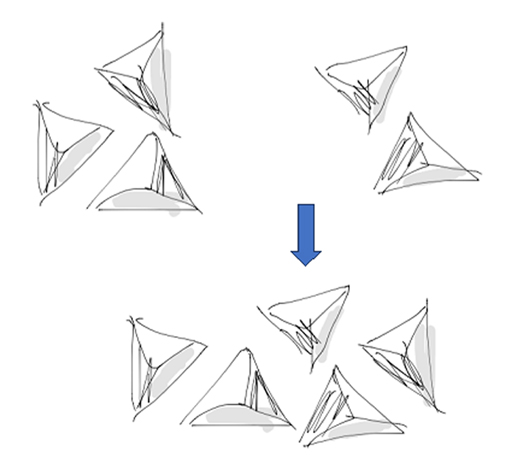1.2 Mind tools
Figure 5 shows some tokens which are believed to have been used for keeping track of property. They date from the first millennium BCE.
Each particular shape might have stood for a certain object, such as a basket of corn or an animal. For example, three baskets of corn might have been represented by three ‘corn basket’ tokens.
The invention of tokens was a major step because they extend the power of the mind. They can be used as thinking tools in three ways:
- Record keeping – three ‘corn basket’ tokens is a way of remembering about three baskets of corn.
- Communication – three ‘corn basket’ tokens is a way of sharing information about three baskets of corn with someone else.
- Calculation – pushing two groups of tokens together is a way of computing that three baskets of corn and two baskets of corn equal five baskets of corn (Figure 6).
Activity 2 Software programmes as tools
Fast-forwarding about three thousand years, today there are software programs that can act as tools in the same three ways as the early tokens described above.
Think of some examples of software, running on computers or as apps on tablets and phones, which can be used as tools for one or more of the following functions.
- Record keeping
- Communicating information
- Calculating
Try to think of at least two examples for each purpose. In some cases, the same program might meet more than one purpose.
Discussion
Here are some examples. You will probably have thought of others.
- Record keeping: spreadsheet, database, note-taking programs and apps, calendars.
- Communicating information: Skype, social media (such as Facebook, Twitter, WhatsApp, Snapchat, etc.), email, wikis, websites.
- Calculating: calculator apps, calculators on the web, spreadsheets, special software such as that used by scientists.
The answers to Activity 2 are all examples of thinking tools that have been created using modern digital technology. But between the use of simple tokens and the arrival of digital technology came writing, books and the invention of printing.
It is easy to see how this contributed to record keeping and communication. You only have to think of account books and letters, for example. Writing made information persistent, so that it could be preserved over time. It also made information portable, so that it could be carried from place to place. Writing also helped with calculation.


